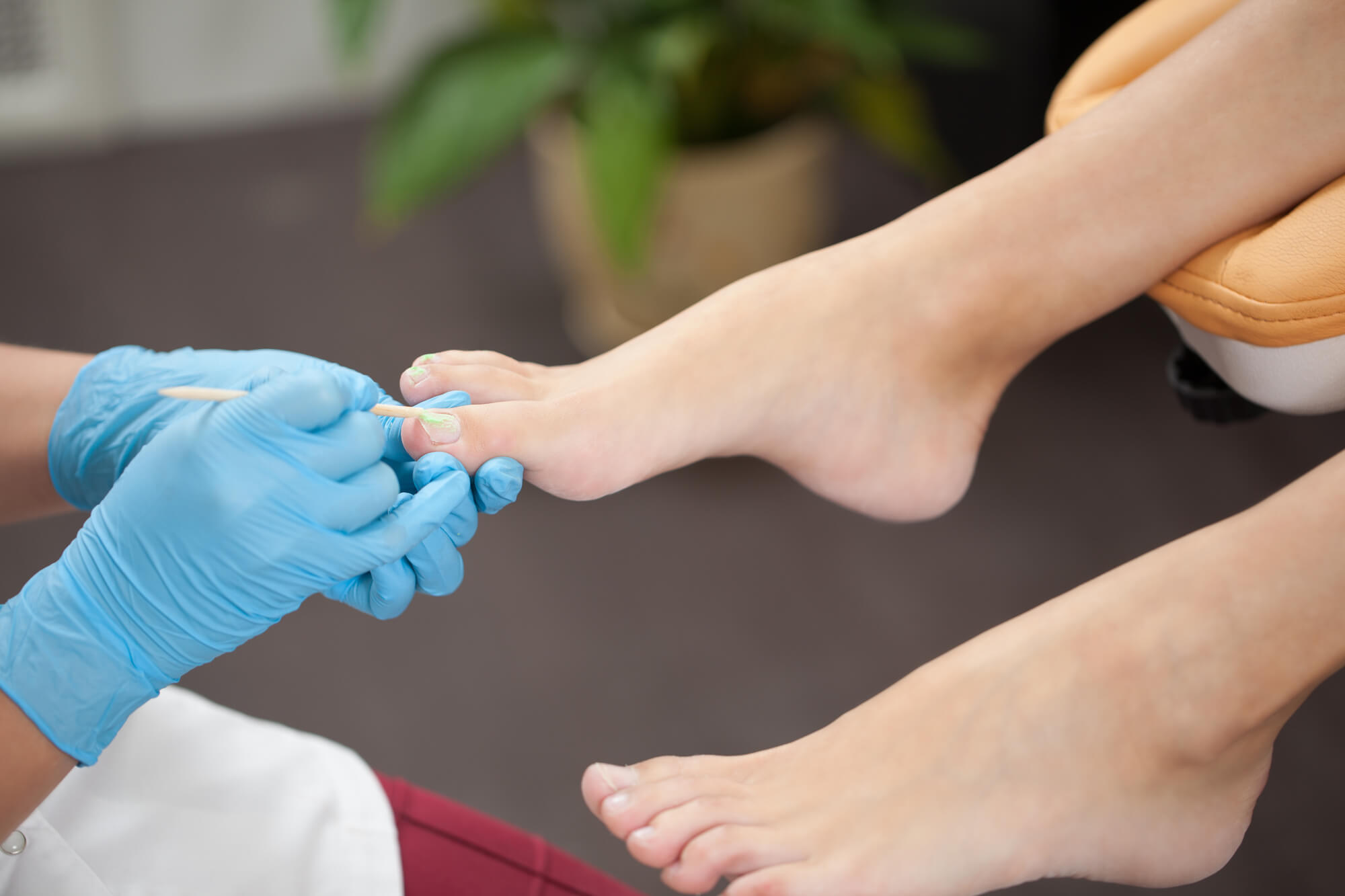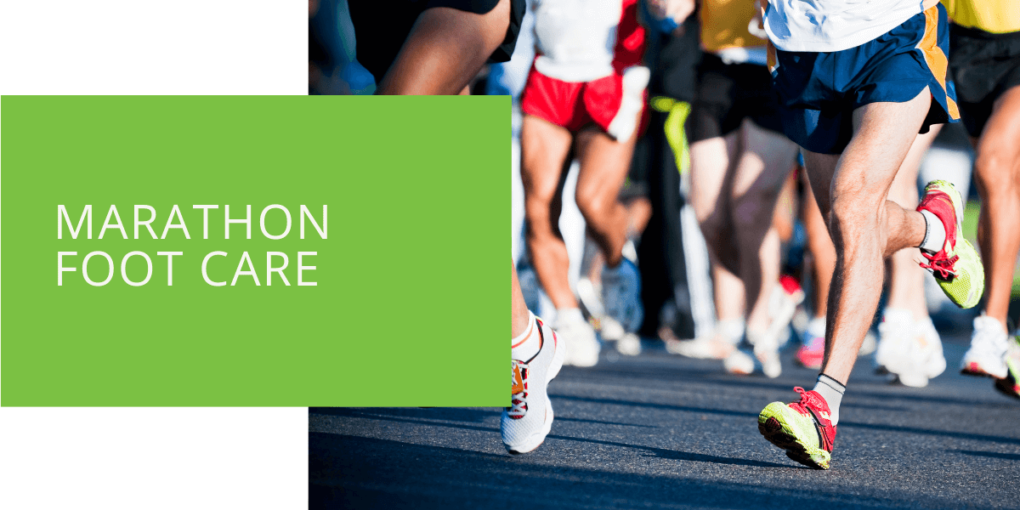Marathon Foot Care: How to Keep Your Feet Happy During and After a Marathon
As a runner, taking care of your feet is crucial for your comfort and performance. Unfortunately, foot problems are common among runners, especially those participating in marathons. From blisters and black toenails to plantar fasciitis and ingrown toenails, many potential foot issues can arise during or after a marathon. However, with proper foot care, you can prevent or minimize these problems and keep your feet happy and healthy.
This article will cover a variety of foot care tips for marathon runners. From choosing the right running shoes and socks to cooling and elevating your feet after the race, we'll provide you with all the information you need to take care of your feet before, during, and after a marathon.
Pre-Marathon Foot Care
Choosing the Right Shoes
One of the most important things you can do to take care of your feet during a marathon is to choose the right running shoes. Proper fit and support are essential for preventing foot problems such as blisters, plantar fasciitis, and other foot issues.
When shopping for running shoes, it's important to consider the shape and size of your feet, your running style, and any special needs (such as overpronation or flat feet). You should also consider the type of surface you'll be running on and the weather conditions.
If you're unsure what type of running shoe is best for you, you should visit a podiatrist or a specialty running store. These professionals can help you find the perfect pair of shoes.
It's also important to break in your new running shoes before the marathon. This will help ensure they are comfortable and well-suited to your feet. Wear them for short runs or walks to break in your shoes, gradually increasing the distance as you go.

Pedicure and Foot Maintenance
In addition to choosing the right shoes, it's important to maintain your feet before a marathon properly. This includes trimming your toenails, removing callouses and rough skin, and moisturizing your feet.
To trim your toenails, use a pair of nail clippers or scissors to cut straight across the nail. Avoid rounding the edges or cutting too short, as this can lead to ingrown toenails.
To gently remove callouses and rough skin, use a pumice stone or a foot file to rub away dead skin gently. You can also use a foot soak or foot scrub to soften the skin and make it easier to remove callouses.
To moisturize your feet, use a foot cream or lotion to massage them and keep them hydrated. This can help to prevent dry, cracked skin and improve circulation.

During the Marathon
Socks and Lacing Techniques
Your socks are an important part of your foot care routine during a marathon. The right socks can help prevent blisters, keep your feet dry, and improve your comfort.
When choosing running socks, look for ones made from moisture-wicking materials, such as polyester or nylon. These materials help to keep your feet dry by wicking away sweat and moisture.
You should also look for socks with a snug fit and good arch support. Avoid socks that are too loose or tight, as these can cause blisters or other foot issues.
In addition to choosing the right socks, it's important to use proper lacing techniques to help prevent blisters. One technique is to "lock" your laces by tucking the ends of the laces into the top eyelets of your shoes. This helps to prevent the laces from coming untied and rubbing against your skin. Another technique is a "bunny ear" lacing method, where you tie a knot with one lace and then tie a knot with the other lace, creating two "ears" that can be tightened separately. This allows you to adjust the fit of your shoes and reduce pressure on certain areas of your feet.

Staying Hydrated and Fueled
Proper hydration and nutrition are essential for maintaining foot health during a marathon. Without enough water and fuel, your feet can become fatigued and prone to injury.
To stay hydrated during a marathon, drink water or sports drinks at regular intervals, such as every mile or every hour. It's also a good idea to carry a water bottle or a hydration pack with you to ensure you have access to fluids throughout the race.
Regarding nutrition, consuming enough calories and carbohydrates is important to sustain your energy levels. This can include energy gels, sports bars, or other portable snacks that are easy to carry and consume on the go.
Post-Marathon Foot Care
Cooling and Elevating Your Feet
After a marathon, it's important to cool down and elevate your feet to help you recover. This can help reduce swelling and fatigue and speed up the healing process.
You can soak your feet in cold water or use a cold compress to cool down your feet. You can also use a foot roller or a massage ball to massage your feet and promote circulation.
Elevating your feet can also help to reduce swelling and fatigue. Lie down or sit with your feet propped up on a pillow or a chair to do this. This allows gravity to work in your favor and helps to reduce swelling and improve circulation.
Treating Blisters and Soreness
Blisters and soreness are common foot problems that can arise after a marathon. To treat blisters, it's important to clean the area with soap and water and then cover the blister with a bandage or a blister pad. Avoid popping the blister, as this can lead to infection.
To alleviate soreness and fatigue in your feet, you can use over-the-counter pain medication or apply a cold compress to the affected area. You can also try massaging your feet with foot cream or lotion to help relax your muscles and improve circulation.

Stretching and Massaging Your Feet
Stretching and massaging your feet can also help to improve flexibility and circulation and aid in recovery after a marathon. You can try pointing and flexing your toes or rolling a ball or a foam roller under your feet to stretch your feet. You can also use a massage ball or a foot massage tool to massage your feet and relieve tension.
Conclusion
By following these foot care tips, you can keep your feet happy and healthy before, during, and after a marathon. From choosing the right shoes and socks to staying hydrated and fueling your body, you can take many simple steps to prevent or minimize foot problems and improve your overall foot health. If you have any persistent foot issues or concerns, it's always a good idea to consult a podiatrist or a foot specialist for advice and treatment.
FAQ
How do marathon runners take care of their feet?
Marathon runners can take care of their feet by choosing the right running shoes, maintaining them with regular pedicures and foot maintenance, staying hydrated and fueled during the marathon, and properly treating blisters and soreness after the race. They can also stretch and massage their feet to improve flexibility and circulation.
How do I keep my feet dry during a marathon?
To keep your feet dry during a marathon, choose socks made from moisture-wicking materials, such as polyester or nylon. You can also apply a foot powder or a spray-on antiperspirant to your feet to help absorb moisture. Also, avoid running through puddles or other water sources to keep your feet as dry as possible.
Why do runners put Vaseline on their feet?
Some runners put Vaseline on their feet to help prevent blisters by creating a barrier between the skin and their shoes. Vaseline is a lubricant that can help to reduce friction and rubbing, which can cause blisters. However, Vaseline should be used sparingly, as too much can cause your shoes to become slippery and make it harder to run.
What do marathon runners wear on their feet?
Marathon runners typically wear running shoes and socks on their feet. It's important to choose running shoes that fit well, offer proper support and cushioning, and socks that fit snugly and are made from moisture-wicking materials. Some runners may also wear insoles or inserts to help improve the fit and support of their shoes.
How do marathon runners protect their feet?
Marathon runners can protect their feet by choosing the right shoes and socks, lacing them properly to prevent blisters, staying hydrated and fueled during the marathon, and properly treating blisters and soreness after the race. They can also stretch and massage their feet to improve flexibility and circulation. If runners have persistent foot issues or concerns, they should consult a podiatrist or a foot specialist for advice and treatment.

